Introduction

The Nikon Nikkor 200mm 2.0 IF-ED Ai from 1977 is not only one of Nikon’s most famous lenses, it is also one of the few super fast tele lenses in the ~200mm range I did not yet get my hands on. I have been watching the eBay auctions for this lens for years and at the end of 2023 I managed to find one in mint condition at a price I could afford. So finally, here we are, to have a closer look at the first of its kind.
Sample Images





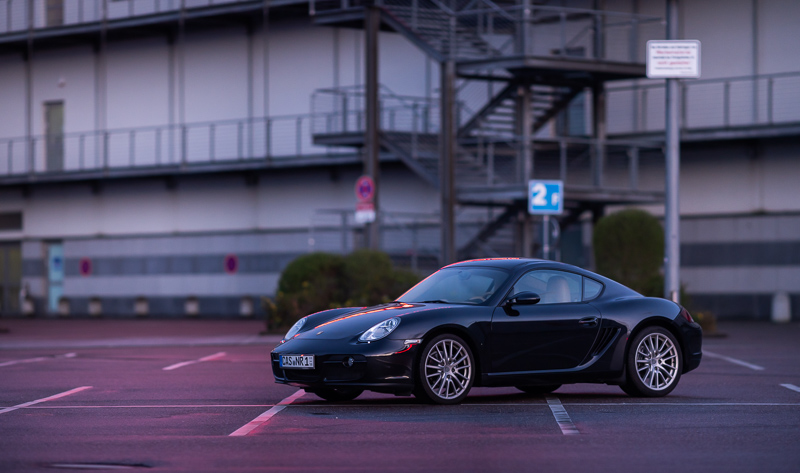
You can find most of the shots in this review in full resolution here.
Contents
Specifications / Version History
According to this list there have been four different versions of this lens, but I doubt you will come across the first one, as apparently only 37 have been made. All of these lenses share the same optical design.
- Nikon 200mm 2.0 IF-ED Ai ~1250 pcs
retractable hood, 1977-1982 - Nikon 200mm 2.0 IF-ED Ai-s ~630 pcs
same as before but Ai-s, 1982-1986 - Nikon 200mm 2.0 IF-ED Ai-s New ~1800 pcs
identification plate, removable HE-4 hood, gel holder, 1986-2005
This is a review of one of the last Ai lenses that have been made, it has the following specifications:
-
- Diameter: 138 mm
- Field of view: 12°20′ (diagonally)
- Length: 214 mm
- Weight: 2472g
- Filter Diameter: 122 mm
- Number of Aperture Blades: 9 (straight)
- Elements/Groups: 10/8
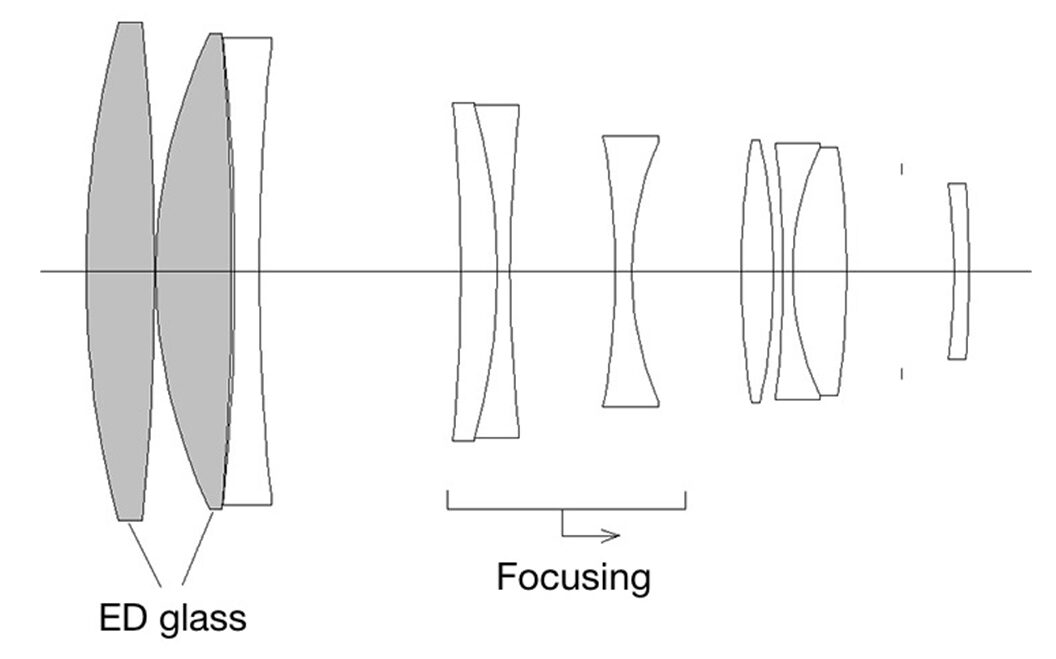
- Close Focusing Distance: 2.4 m (measured)
- Maximum Magnification: 1:9.5 (1:6.5 with 10 mm extension tube, 1:5.5 with 16mm extension)
- Mount: Nikon-F
buy used from ebay.com | ebay.de (affiliate links) starting at $1800
History
If you want to know more about the development and the history of this lens you should first have a look at Nikkor – The Thousand and One Nights – No. 31: Nikon 200mm 2.0 IF ED.

1977 was a special year for Nikon, as it was the year where two of their most famous and relevant lenses have been released: the Nikon Noct-Nikkor 58mm 1.2 and this Nikon 200mm 2.0 IF-ED. The Nikon 200mm 2.0 IF-ED was the fastest 200mm lens ever made at that time. The slightly shorter (but actually more complex) Olympus OM 180mm 2.0 Zuiko Auto-T followed in 1983 and the only manufacturer who ever made a faster 200mm lens was Canon with their Canon EF 200mm 1.8L USM in 1988.
While this was always a very expensive lens it was not a mere halo product to polish the brand image, it was a highly useful tele lens for shooting indoor sports, which is what it had been designed for. Around 3,700 of these have been made.
Handling / Build Quality

The Nikon 200mm 2.0 IF-ED has been designed with professional use in mind and it features the same high level of build quality that made Nikon famous in the 1970s. Pretty much everything feels like it is made from metal and very sturdy. A lens one would expect to be able to withstand decades of professional use.
This is an all manual lens. The aperture ring is located close to the bayonet and features the same design as all of Nikon’s aperture rings with equidistantly spaced full-stop click-stops.
The huge focus ring rotates 270° from the minimum focus distance (2.4 m) to infinity. The resistance is just about right for a lens like this and also perfectly even, as you would expect.
The Nikon 200mm 2.0 features my favorite type of lens hood: a retractable one. It can be locked in place when extended but sadly not when it is retracted. It also has black felt on the inside – as it should be.

Unlike many other super tele lenses this Nikon 200mm 2.0 does not feature a drop-in filter slot but huge 122mm front filters. The sample I bought came with a clear protection filter and to show you how massive it is I added a 77mm polarizer for scale.

The price to pay for that extra stop over a 200mm 2.8 lens is high, as you need that front element with a diameter of at least 10 cm compared to the 71mm you need for a 200mm 2.8 as shown above.
Vignetting
light falloff

| f/2.0 | 1.8 EV |
| f/2.8 | 1.1 EV |
| f/4.0 | 0.9 EV |
| f/5.6 | 0.7 EV |
| f/8.0 | 0.5 EV |
| f/11 | 0.3 EV |
Wide open the vignetting amounts to almost 2 EV in the corners but things improve fast on stopping down. Latest by f/8.0 it is hardly noticeable anymore. All the super fast 200mm lenses I tried show a very similar performance here.

It is recommended to have a look at this article first to get an idea how this brightness graph works.
optical vignetting
Very fast lenses usually show a significant amount of optical vignetting. Without going too much into technical details optical vignetting leads to the truncation of light circles towards the borders of the frame.
In the center of the frame almost every lens will render a perfect circle, but only lenses with very low optical vignetting will keep this shape in the corners.
So in the following comparison we move from the center (left) to the extreme corner (right) and see how the shape of the light circle changes.
We see a notable amount of optical vignetting similar to the Canon EF 200mm 2.0 L IS or the Canon EF 200mm 1.8L. The Canon EF 200mm 2.0 L IS and the Nikon AF-S 200mm 2.0G VR both feature rounded aperture blades. This is not the case here, so already at f/2.8 we see very unnatural nine sided figures instead of circles. The good news are, that unlike the Canon EF 200mm 1.8L and the Olympus 180mm 2.0 this lens does not create even more unnatural sawtooth highlights.
Sharpness
Focus Shift
At close distances the Nikon 200mm 2.0 shows strong spherical aberration and I also see a bit of focus shift, but not enough to push the subject out of the plane in focus.
infinity (42mp Sony A7rII)

Heat haze is always a problem when looking at the infinity resolution of tele lenses and this was no exception here. It doesn’t look to me like this lens had been optimized for infinity shooting as we clearly see some color aberrations – not only at f/2.0. The center reaches peak performance at f/5.6, for best across frame performance stopping down to f/11 is a good idea.
The Canon EF 200mm 1.8L and 200mm 2.0L IS show a much better performance at infinity. Actually many much cheaper and smaller (but also slower) 200mm lenses perform way better.
close focus 2.4 m (42mp Sony A7rII)
100% crops from center, A7rII
A minimum focus distance of 2.4 m is the second worst I came across in this class of lenses (worst being the Canon EF 200mm 1.8L USM with 2.5 m). It is still sufficient for all kinds of portraits though.
Of all the lenses in this class this is also the weakest at its maximum aperture at close distances. Stopping down to f/2.8 increases the contrast noticeably.
Flare resistance
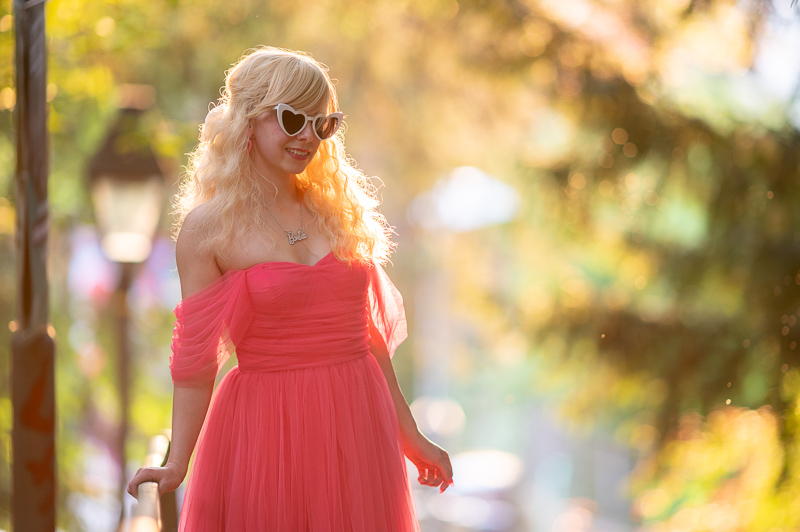
As is the case with most of the super tele lenses this is definetly a weak spot. With the sun inside the frame it is easily possible to catch a few ghosts, with the sun outside the frame veiling flare becomes a problem – even with the hood extended and even on an overcast day.

The sample above shows one such case: it was overcast, the hood was extended, yet we see noticeable veiling flare in the top left corner stealing away a lot of contrast.


This is a common issue with (fast) tele lenses though. The Nikon AF 180mm 2.8D performed just as bad and also the Nikon AF-S 200mm 2.0G VRI’s performance is nothing to write home about.
Distortion
The lens is practically distortion free.
Bokeh

Its huge amount of bokeh caused by its 10 cm diameter entrance pupil is the main reason people are still interested in this Nikon 200mm 2.0 as a special purpose long portrait lens.
Close Distance




A minimum focus distance of 2.5 m is not that great for a 200mm lens, but it is still enough to completely obliterate the background into a soft veil of colors.
I was told that in China this class of lenses is often referred to “air cutters”, because the resulting images look like someone cut through the scene, leaving only a very thin line in focus. I think that is actually a fitting description.
Mid Distance




With complex backgrounds (e.g. in the forest with lots of foliage) I have to say this lens does not render the world’s smoothest bokeh, we definitely see some outlining here. I prefer the rendering of the newer Nikon AF-S 200mm 2.0G and the Canon EF 200mm 1.8L here.
Long Distance


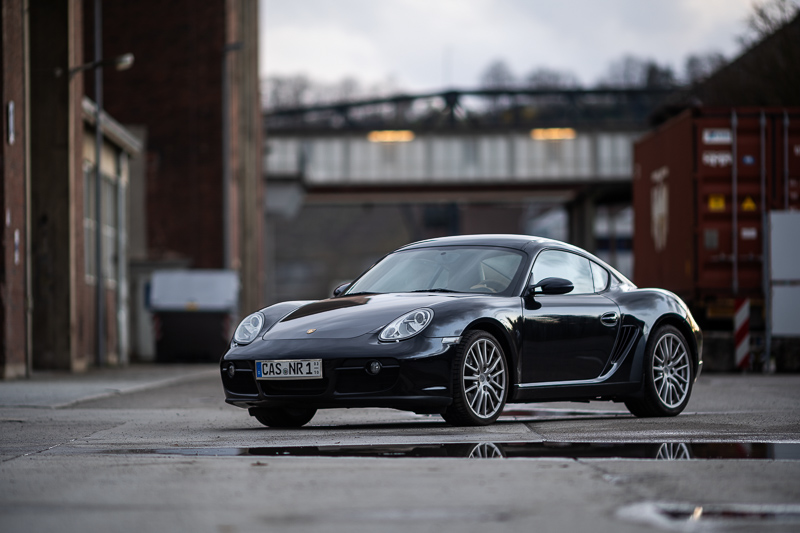

Long focus distances are where this class of lenses really shines, as they allow to create a very shallow depth of field even in full body portrait situations or with big objects like cars. The disadvantage is, that you need enough room to work with such a long lens.
Brenizer/Bokehpanoramas

Because of its huge entrance pupil this is also a lens that works well for Brenizer/Bokehpanoramas.
Coma
Sony A7rII | Nikon 200mm 2.0 IF-ED | 100% crops from extreme corner
Coma is corrected reasonably well, but for good corner sharpness stopping down is needed as we have already seen before. I know some people like to use fast 200mm lenses for deep sky astrophotography, but there are definitely better options available for that these days. The Canon EF 200mm 2.0L IS for example corrects this aberration perfectly.
Sunstars

I doubt anyone on their sane mind will use this lens to shoot architecture during blue hour, but if you do, it can create decent 18-pointed sunstars stopped down.
Chromatic aberrations
lateral
Despite the usage of two huge ED elements there are still noticeable lateral CA visible. The same was also the case for the Canon EF 200mm 1.8 L and also the Nikon AF-S 200mm 2.0G doesn’t correct this aberration perfectly. Only the newer Canon EF 200mm 2.0L IS corrects this aberration almost perfectly.
longitudinal
Sony A7III | Nikon 200mm 2.0 IF-ED | f/2.0 | 100% crops
We already saw in the sharpness section that this Nikon 200mm 2.0 shows some color aberrations at wider apertures. It does feature two huge ED elements, but that is apparently not enough to fully correct the longitudinal CA. At f/2.0 we see noticeable bokeh fringing in the form of purple outlining in front of the focal plane and green behind it. Stopping down to f/2.8 is also not enough to get rid of it.
The picture above also shows the performance isn’t exactly terrible though and many Nikon lenses released 30 years later actually perform worse in this category – not the AF-S 200mm 2.0G though, that is a true Apo lens.
Conclusion
good
|
average
|
not good
|
When released in 1977, this Nikon 200mm 2.0 IF-ED was a huge deal. Being one stop faster than all of the competitors was a big advantage for all the sports and press photographers, where one stop – meaning half the shutter speed – easily made the difference between getting or not getting the shot.
Now, almost half a century later, no one on their sane mind would still be professionally shooting sports with this lens. Any 70-200mm 2.8 zoom with AF would yield a way higher number of usable shots.
So these days, this has mainly beome a special purpose portrait lens. And the bokeh sure is still great. But due to its long focus throw also here I would try to avoid taking pictures of moving targets. Thanks to its huge entrance pupil it is also a very interesting option for taking Brenizer/Bokehpanoramas and I actually think that is where it is best used today.
Because this 200mm 2.0 is such a significant part of Nikon’s history, it will also always hold special appeal to collectors.
buy used from ebay.com | ebay.de (affiliate links) starting at $1800
Alternatives
Auto Focus
Nikon AF-S 200mm 2.0G IF-ED VR(II)
Nikon’s successor to the lens being reviewed here, released in 2004. It is better at everything, except that it features electronics that may die one day and that it is usually more expensive.
buy from ebay.com | ebay.de | B&H (affiliate links) starting at ~$2500 (used)
Canon EF 200mm 2.0L IS USM
Canon’s competitor to the aforementioned lens. The Canon lens has been released four years later (in 2008) and features a more complex optical design. It is about 400g lighter – maybe due to the usage of a fluorite lens, technology not available to Nikon in 2004, as well as the lack of a built-in protection filter – and sharper in the corners at infinity at wider apertures. However, personally I prefer the bokeh of the Nikon lens and this is what I would ultimately buy a lens like this for.
buy from ebay.com | ebay.de | B&H (affiliate links) starting at $3500
Canon EF 200mm 1.8L:
This lens is a 1/3rd of a stop faster than the f/2.0 lenses, but apart from that I prefer both the aforementioned lenses. Both these 200mm 2.0 lenses are: lighter, easier to handle, have better aperture diaphragms, better minimum focus distance, IS/VR, no focus by wire and spare parts are still available.
buy used from ebay.com | ebay.de (affiliate links) starting at $2500
Manual Focus
Canon nFD 200mm 1.8L:
Same optical design as the EF version mentioned above, but manual focus only and with FD mount. Very rare!
buy used from ebay.com (affiliate link) starting at $5000+
Olympus OM Zuiko 180mm 2.0:
It is quite a bit lighter than the other lenses mentioned here and also offers the highest magnification. Very rare, too expensive compared to the Nikon/Canon options.
buy used from ebay.com (affiliate link) starting at $5000+
Olympus OM Zuiko 250mm 2.0:
A very rare and spectacular lens. Noticeably heavier and therefore more difficult to handle.
buy used from ebay.com (affiliate link) starting at $8000+
Contax/Yashica Zeiss Aposonnar 200mm 2.0 T*:
I barely know anything about this lens. If you happen to own one and would be willing to let go for it for me to write a review: drop me a note.
buy used from ebay.com (affiliate link) starting at $3500+
Leica APO-Summicron-R 180mm 2.0:
This is the most expensive lens in this class. Today most of them are probably in some collector’s showcases and therefore I can’t tell you much about it. If it is a true apochromatic design it might be – in terms of optical quality – the best manual lens in this class, but I will probably never find out. If you happen to own one and would be willing to let go for it for me to write a review: drop me a note.
buy used from ebay.com (affiliate link) starting at $7000+
Sample Images

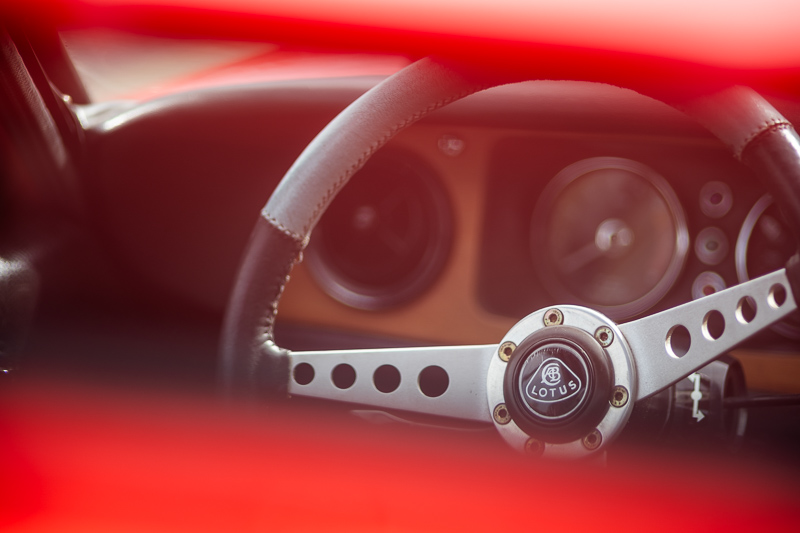








You can find most of the shots in this review in full resolution here.
Further Reading
- All Lens Reviews
- Sony FE lenses: Our Guide to Portrait Lenses
- The Best Lenses for Brenizer/Bokehpanoramas
- Review: Nikon AF 28mm 1.4D
- Review: Nikon 55mm 1.2 Ai
Support Us
Did you find this article useful or just liked reading it? Treat us to a coffee!
![]()
![]()
![]() via Paypal
via Paypal
This site contains affiliate links. If you make a purchase using any of the links marked as affiliate links, I may receive a small commission at no additional cost to you. This helps support the creation of future content.
Latest posts by BastianK (see all)
- Review: Thypoch 21mm 1.4 Simera - July 12, 2025
- Review: SLRmagic 50mm 0.95 Hyperprime LM - July 5, 2025
- Full Resolution Pictures getting fixed - July 4, 2025



















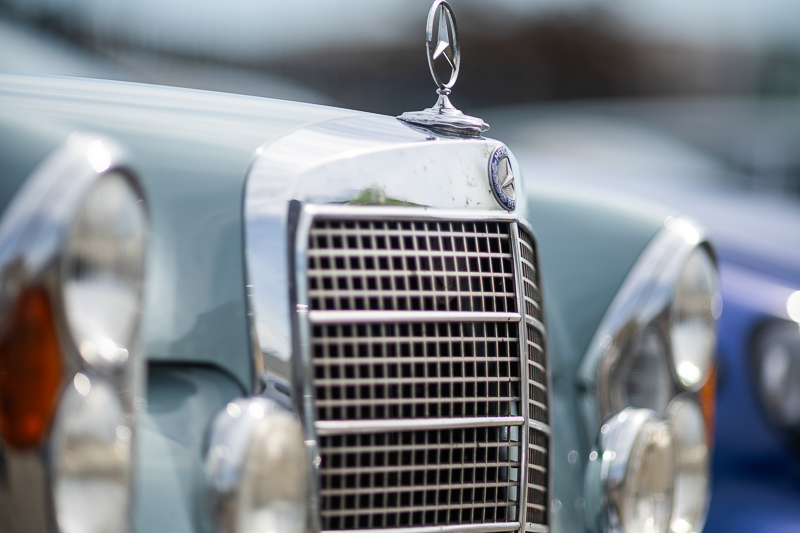

Absolutely love that you continue to review these older and classic lenses. Thank you for all your time and efforts, it’s so interesting!
Very good review again Bastian , I’am leaning to buy a AF-S-G version (I like the bokeh from what I have seen) or the Plena being much more compact and probably one of the best optics around. For me subject isolation in landscapes with 3D pop, and (tracked) astroshots are my favorite subjects with such a lens. I think the 200mm f2 might be a bit too heavy for the Skywatcher tracking mount. I have seen some amazing nebulea shots with the MF and AF version.
There will also be a review of the AF-S G version 🙂
Bjorn, for what it’s worth, and to reassure you, I can mention that the Canon 200mm f/1.8 works alright on the Skywatcher Star Adventurer mount, if that’s the mount you’re referring to – and that’s a particularly heavy 200mm. Focal length and lens physical length is the greater cause of danger for blurred/shaky images than weight, I think, and 200mm still isn’t all that long, fortunately.
You have to use good practice in general, of course: the Star Adventurer should be on a decent tripod, with its legs not extended, etc. But it works.
Hi Geoffrey, thanks I did some tests with the Nikkor AIS ED 300 mm f2.8 which did’nt work out well even after perfect balancing it to both axis. That lens is too much for a Skywatcher Adventurer (so you guessed right)
kr bjorn
OMG, I have problems with my dog’s photographies with manual 50/2, can’t imagine how much luck/effort cost the one in the review with 200/2:D
Great photos, they look really special!
I guess it also depends on the dog, with this one it for sure wasn’t easy 😅
Nice to see someone reviewing old lenses. Your sample images show how capable it is wideopen. Aside from the chromatic aberation, which can be well corrected in post these days, it is one of the sharpest lenses wideopen, in the centre, that I have ever used. For sports I switched to the much newer and more convenient Nikon 80-200/2.8 AF-S. The zoom had no CA but was not as sharp. Although this may be the softest of these primes, it is still a very sharp lens. I miss the subject isolation and bokeh that you have illustrated so well.
Would be interesting, seeing how the M42 Carl Zeiss Jena Sonnar 180/2.8 plays against these calibers 🙂
I own 180mm sonnar, zebra version, in pentacon six mount. Yesterday I’ve bought p6-sony e adapter, so this weekend I’ll test it with a7r3. I’ll post some photos here next week, if you’re interested.
Cool! This was a lens quite praised in the old days of the P6.
An interesting coverage of yet another medium telephoto prime from decades past, to further emphasize the glaring absence of any solid –both in build quality and performance– available primes in this segment, for FF mirrorless cameras.
Despite the obvious gaping hole between 135mm and 400mm, no one, not even Laowa, known for thinking out of the box and innovating with optics no one knew they needed, has made any effort to appropriate the market of 150, 180, 200, 250, 280, 300 and 350mm.
The argument that medium telephoto primes represents a niche too meager for any manufacturer to consider dedicating resources to, sounds more and more like a self-fulfilling prophecy than the fruit of serious analysis.
One solid fact that would arguably constitute evidence of very real demand for medium telephoto primes, are the absurd prices for lenses older than the camera enthusiasts prepared to buy them, listed on e-bay. A quick glance at the prices the alternatives to the 200mm f/2 Nikon featured here, lets you get an idea of the cash flow manufacturers are letting slip.
Decades old lenses, used, with outdated coatings, without warranty or chances of getting service from original manufacturers, should the precious collectible items suffer any disgrace, are being bought for prices that far exceed and even double and triple the very best new lenses in production today.
What would it take for Cosina to offer an updated version –and even if said update only applied to the coatings and not the optical design– of the Apo Lanthar Macro 180mm f/4, with a 1.4 and/or 2x Apo converter?
I’d even be preperaed to adapt it o my Sony camera if it were brought back from the dead for their still kicking SL line-up.
Why not 150, 180 or 280mm compact –2.8, 3.5 or f.4– Apo Lanthars to complete a solid and unrivalled landscape kit?
Sure, the demand for relatively slow MF medium telephoto Apochromatic primes, below 1kg and that can be shot handheld, may not be the predictably highest, but how to know if you don’t offer them? Heck, I’d even pledge a grand per lens to crowdfund any of those focal lenghts with rocksolid performance and build quality. I might even consider a high-grade AF medium telephoto prime if Tamron or Samyang were up for it, and that’s quite desperate.
What other options are there really? Buying used lenses whose legendary status or cult-following is more real than their overhyped performance? I don’t think so.
Well, I think I don’t have to further preach to the choir, but what if we amplified our voices by making some sort of noise on the social media of manufacturers, and see if they pick up? I mean, if you could rally backers for a crowdfunding effort, the lack-of-sufficient-demand argument would be pretty much fall apart, not?
What say you?
I pitched such lenses to many manufacturers already – with so far little success.
Laowa might be up to it, but only after they figured all the AF stuff out, as they will not produce another Tele lens without AF.
I hear you, and I suspect you are not alone in doing so. What I assume has not yet been attempted before though, is a collective effort. How about doing a poll here among your readers and those at Fred Miranda’s fórum and alike? A survey to know which focal lengths, designs and characteristics the photography crowd are interested in, and the prices they are prepared to pay.
As they say in my tongue, the worst effort is the one never undertaken.
Schöne Grüße
Didn’t realize they were now that committed to AF, interesting…
Problem is rather that no one bought their 105mm STF lens.
All the more reason to ask photographers what kind of lenses they are interested in.
Innovating with new exotic and interesting designs takes courage, but apparently asking photographers what they would most rather spend their hard-earned cash on, takes even more.
All those looking for, and buying more “compact” –meaning handholdable– yet outdated MF medium telephoto lenses, should be a quite telling sign. Photographers willing to spend 4-8k on old Leica-R, Canon and Nikon medium telephoto lenses almost half a century old, IS an active market. And again, crowdfunding is a proven business model. So much so, that Meyer-Görlitz took off with the money.
Times change and businesses should follow, and that goes for all manufacturers. There is money in the products not being made, but which photographers are genuinely interested in.
I get it, most buyers know next to nothing and have zero interest in learning; most just want the latest buzz with all the AI and computational photography features and AI that do all the work of exposure for them. But who invests tens of thousands on entire camera/lens systems? Yup, Photographers.
Discarding the gap between 135mm and 400mm because you didn’t sell a 105mm lens with an apodization element, is a flawed calculation, to put it politely.
Zhong Yi released the Mitakon 200mm/4 1:1 Macro APO last year, though it hasn’t seemed to get much notice.
I doubt the folk looking for a “compat lightweight tele” want to deal with this 1.3 kg macro lens.
I would rather use a 70-200mm 2.8 in that case 🙂
I would be most inclined towards a lens like the CV Macro Apo Lanthar 180mm f:4 , that weighs less than 500gr, and slightly more than a 1lb. It’s very compact for its focal length, being slightly longer than the Loxia 85mm f2.4, and extending quite some more.
Nevertheless, and considering what is in existence out there, I wouldn’t hesitate to get the heavier and larger Leica Apo Elmarit 180mm f/2.8 R, and even pair it with the much heavier and larger Leica Apo-Telyt 280mm f/4 R (roughly the weight of the 100mm Otus). I have shot both handheld and have no problems there. What makes me hesitate here is the price. The former sells for at least 3-4k, and the latter for up to 6k. This is just not reasonable for lenses this old.
What I would not do, is settle for some plastic telephoto prines or zooms that can cost nearly as much. In my order of priorities, I take the weight of a well built MF prime, over fast plastic AF primes or zooms.
The thing is, we know compact MF telephoto primes with solid build quality are very feasible, and many older lenses certainly attest to it. They will outperform any telephoto zoom, and could be less expensive, and even more versatile with1.4x and 2x converters.
Those who still buy Otus and Milvus DSLR MF primes, have no quibbles with paying for them nor lugging them around, so the weight and compactness aren’t necessarily the ultimate counter argument for manufacturers.
When I think of Nikon’s 58mm NOCT I can’t help cracking up. To make a lens that showcases their engineering prowess, they had to double the weight of the Otus lenses, AND the price. So much for engineering competence there, lol.
This frankly ridiculous piece of glass has sold quite a few copies, proving that weight, price and MF are not sufficient deterrence for good cash.
So why would relatively compact handholdable MF telephoto primes be prohibitive in the sales estimates of manufacturers?
If CV released a 105 f/2.8 prime with an apodization element tomorrow, and with the Apo Lanthar designation, I bet it would be on back-order just days after its release.
This can be a matter of prestige and trust, which means that Laowa still has to overcome widespread prejudice against Chinese products, despite that it so far is orders of magnitude more relevant as a genuinely innovative and capable optics manufacturer, than all its competitors combined.
I have Laowa’s 58mm and 90mm 2x Macro lenses, and have only praise for their achievement with these two lenses.
I sincerely believe Laowa wouldn’t go wrong with a series of relatively compact Apochromatic MF telephoto primes, including focal lengths between 150 and 350mm, with teleconverters to make them more attractive. Needless to say, if CV or Zeiss released similar lenses, they would go as quickly as hot dogs.
It’s time to rethink the camera and lenses business model, on the era of smartphones with 3 cameras and computational photography, let alone geopolitical tensions that shake markets.
I’d start asking photographers what they want and need, and resort to crowdfunding if taking steps appears too uncertain.
Well, well, well…
https://www.sonyalpharumors.com/wow-new-sigma-patent-discloses-the-design-of-a-new-300mm-f-2-8-and-400mmf-4-0-for-sony-fe/
The NOCT is better optically compared with the Otus.
I doubt the folk looking for accurate information want made-up quotes that aren’t from the comment I was replying to. Rawiri was talking about the lack of primes between 135 and 400mm, and they listed a Chinese lens maker, APO, and macro, which all fit this lens. It’s a 200mm macro, which used to be a mainstay in the lens lineup of big manufacturers but has disappeared in recent generations, and that is what Rawiri was talking about: the absence of medium-telephoto primes in modern mirrorless systems. I haven’t seen much coverage of this Zhong Yi lens, so I thought people might appreciate being informed in case they hadn’t heard about it, despite it not being perfect at over 1kg. That lack of information and enthusiasm for the lens is also why I haven’t taken the plunge to get one myself though, despite valuing the opportunities a 200mm macro provides.
Hey there, Crazy Leica Fox, I was indeed aiming for the medium telephoto segment between 135 and 400mm, and lenses with the characteristics you mentioned. I would add that, being someone who only shoots stills, MF, and almost exclusively primes, I would however not give up the priority of a well made MF prime if compactnes and lightweight means plastic and AF. In the segment between 135 and 400mm, there are plenty of discontinued MF primes with decent performance, which weigh quite a bit less than 1kg, and even quite a few under 500gr up to 200mm and f/4.
If you think of it, it’s quite a significant segment of focal lengths that, as you well point out, used to be well covered by camera/lens systems from most popular camera and lens manufacturers not that long ago. Hence, the only alternative to find reasonably sized medium telephoto MF primes with solid build and decent performance in that segment, these days, is tapping into the second hand market.
I have to thank you for your very interesting and tempting recomendation of the Zhong Yi 200mm f/4 Macro Apo. I was totally unaware of it.
As I mentioned in my previous comment, I would rather have something lighter, like the Voigtlander Apo Lanthar 180mm f/4, but if I have to apply my personal criteria, I gladly take the weight of a well and solidly built prime than the dubious plastic and/or fallible motors of some old telephoto primes or Zooms. I have shot up to 1800gr worth of glass handheld for hours, and with no complaints, and I regularly enjoy my MF Zeiss C/Y Vario Sonnar 100-300mm Zoom from 1994, that weighs a little under 1kg with adapter on my sony alphas. A different thing is carrying it around. My wife rebaptized my Billingham bag the “Killinghim”.
I am seriously thinking of getting that Zhong Yi, as the price tag is unbelievable for such a special lens, and with an Apochromatic design. I had also been thinking about the Irix 150mm f/2.8 Macro, which is another MF medium telephoto prime with aparently solid build quality and an equally attractive price tag. Where I am less enthusiastic, though, is regarding copy variation and some quality control issues. Buying and returning lenses until you get a good copy can be quite daunting. I have had no issue with my CV or Zeiss lenses, but a minor ones with Laowa and disastrous ones with Sony. In the end I gave up on getting good Sony GM copies, as I don’t really enjoy AF anyway. If you look at the MTF measurements presented by Roger Cicala over at LensRentals, you can also see that Zeiss’ own measurements are very reliable, while Sony’s are very much not.
I would indeed also love to see the great team here give these two lenses a shot. I think these manufacturers have improved over time, and are offering interesting and ambitious designs compared to the well established brands… and they are MF of course. Looking at the incredibly affordable Zhong Yi cinema lenses, for example, I would really like to try the T1 line-up for low-light photography.
Let’s hope lens manufacturers see the gaping hole for medium, telephoto primes between 135mm and 400mm. As you can see from my previous comment, Sigma has already identified this gap and is apparently prepared to exploit it. That first stab might indeed be successful, and consequently attract competitors. If you pay attention to the comments on that SonyAlphaRumors post, you’ll see the interest is very much there.
Thanks again for the recommendation, Crazy Leica Fox, and enjoy a great weekend.
Great review as always. Lens takes very nice portraits but there are many more lenses I’d need before this one. I’d probably be okay with Nikons 180mm F2.8 for much less $ (and weight and performance).
Also, kudos for managing to nail focus with that lens while photographing a dog. Especially little ones like that, they’re quite active.
Well if you’d have a chance to come to Shanghai, A Canon 200mm f1.8 x 0.8 converter (with AF) and A Contax 200mm f2 might be waiting for you(and a hell range of vintage lens):)
I always wanted to visit Shanghai 🙂